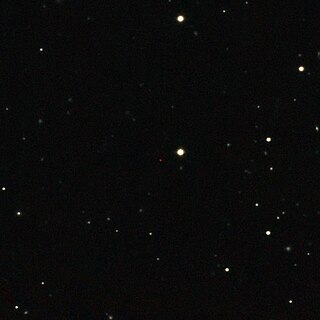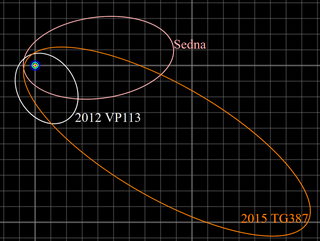External links
- ʻŌiwi TV
- ʻAha Pūnana Leo: Language Nest
- Ka Haka ʻUla O Keʻelikōlani College of Hawaiian Language of the University of Hawaiʻi at Hilo
- Native Hawaiian Education Act
- NSF
Larry Lindsey Kimura (June 29, 1946 - [1] ) was born in Waimea, Hawaii County, Hawaii, U.S.A., between his Nisei father Hisao Kimura, who had immigrated from Hiroshima, Japan, and his Hawaiian mother, Elizabeth Lindsey, who had been brought up in a predominantly Hawaiian-speaking family. [2]
Kimura is a professor of the Hawaiian language and Hawaiian studies at the University of Hawaiʻi at Hilo in the Ka Haka ʻUla O Keʻelikōlani, College of Hawaiian Language. Kimura has been an advocate for the preservation of the Hawaiian language, and was a co-founder of ʻAha Pūnana Leo. [3] [4]
Astronomers consulted with Kimura to create Hawaiian names for the first observed interstellar asteroid, ʻOumuamua, the first imaged black hole, M87*, and other notable objects discovered or imaged from Hawaii.
In April 2019, astronomers operating the James Clerk Maxwell Telescope and Canada–France–Hawaii Telescope (part of the Event Horizon Telescope array), such as Doug Simons, approached Kimura to give a Hawaiian name to the recently imaged black hole M87* in the galaxy Messier 87, in recognition of the fact that the telescope was on Mauna Kea. Kimura came up with the name "Pōwehi", from pō 'darkness' or 'night' and wehi 'darkness' or 'adornment' [5] to suggest "the adorned fathomless dark creation" or "embellished dark source of unending creation", found in the intensified form pōwehiwehi in the Kumulipo , a Hawaiian creation chant recorded in the 18th century. [6] [7] (Pōwehiwehi means 'darkness streaked with glimmers of light', a generating agent of a stage in the development of life on earth as it advances toward the light, from pō 'darkness' and wehiwehi 'dappled shade'.) [8] The governor of Hawaii declared 10 April 2019 to be "Pōwehi Day". [9] Unlike ʻOumuamua, however, the name Pōwehi has not been submitted to the IAU, as the IAU has no provision for accepting names for galaxies or black holes. [10]
Hawaiian is a Polynesian language of the Austronesian language family that takes its name from Hawaiʻi, the largest island in the tropical North Pacific archipelago where it developed. Hawaiian, along with English, is an official language of the US state of Hawaii. King Kamehameha III established the first Hawaiian-language constitution in 1839 and 1840.
In Hawaiian religion, the Kumulipo is the creation chant, first recorded by Westerners in the 18th century. It also includes a genealogy of the members of Hawaiian royalty and was created in honor of Kalaninuiamamao and passed down orally to his daughter Alapaiwahine.

Messier 87 is a supergiant elliptical galaxy in the constellation Virgo that contains several trillion stars. One of the largest and most massive galaxies in the local universe, it has a large population of globular clusters — about 15,000 compared with the 150–200 orbiting the Milky Way — and a jet of energetic plasma that originates at the core and extends at least 1,500 parsecs, traveling at a relativistic speed. It is one of the brightest radio sources in the sky and a popular target for both amateur and professional astronomers.

The University of Hawaiʻi at Hilo is a public university in Hilo, Hawaiʻi. It is one of ten general campuses of the University of Hawaiʻi System. It was founded as Hilo Center at Lyman Hall of the Hilo Boys School in 1945 and was a branch campus of the University of Hawaiʻi at Mānoa. In 1970 it was reorganized by an act of the Hawaiʻi State Legislature and became a campus within the newly created University of Hawaiʻi System.

The James Clerk Maxwell Telescope (JCMT) is a submillimetre-wavelength radio telescope at Mauna Kea Observatory in Hawaii, US. The telescope is near the summit of Mauna Kea at 13,425 feet (4,092 m). Its primary mirror is 15 metres across: it is the largest single-dish telescope that operates in submillimetre wavelengths of the electromagnetic spectrum. Scientists use it to study the Solar System, interstellar dust and gas, and distant galaxies.

ʻImiloa Astronomy Center is an astronomy and culture education center located in Hilo, Hawaii. Conceived by founding Director George Jacob in 2001, it features exhibits and shows dealing with Hawaiian culture and history, astronomy, and the overlap between the two.

Abraham "Avi" Loeb is an Israeli-American theoretical physicist who works on astrophysics and cosmology. Loeb is the Frank B. Baird Jr. Professor of Science at Harvard University. He had been the longest serving chair of Harvard's Department of Astronomy (2011–2020), founding director of Harvard's Black Hole Initiative and director of the Institute for Theory and Computation within the Harvard-Smithsonian Center for Astrophysics.
Pūnana Leo are private, non-profit preschools run by families, in which the Hawaiian language is the language of instruction and administration.
Hawaiian studies is an academic discipline dedicated to the study of Hawaiians. It evolved in the second half of the 20th century partly in response to charges that traditional disciplines such as anthropology, history, English language, ethnology, Asian Studies, and orientalism were imbued with an inherently eurocentric perspective. Ethnic Studies has mostly been a study of minority settler cultures although Hawaiian Studies shares with Ethnic Studies attempts to remedy problems with other academic disciplines by trying to study Hawaiian culture and people on their own terms, in their own language, acknowledging their own values.

The Native American Languages Act of 1990 is the short cited title for executive order PUBLIC LAW 101-477 enacted by the United States Congress on October 30, 1990. Public Law 101-477 of 1990 gave historical importance as repudiating past policies of eradicating Indian Languages by declaring as policy that Native Americans were entitled to use their own languages. The fundamental basis of the policy's declaration was that the United States "declares to preserve, protect and promote the rights and freedom of Native Americans to use practice and develop Native American Languages".

ULAS J1120+0641 was the most distant known quasar when discovered in 2011, surpassed in 2017 by ULAS J1342+0928. ULAS J1120+0641 was the first quasar discovered beyond a redshift of z = 7. Its discovery was reported in June 2011.
Ka Haka ʻUla O Keʻelikōlani (KHUOK) College of Hawaiian Language is one of nine colleges and programs at the University of Hawaii at Hilo. KHUOK offers BA, MA and PhD programs in Hawaiian language and related topics including linguistics, literature, language acquisition, and indigenous cultural revitalization.
Keiki Kawaiʻaeʻa is an associate professor at the University of Hawaii at Hilo where she serves as Director of the Ka Haka ʻUla O Keʻelikōlani College of Hawaiian Language. Dr. Kawaiʻaeʻa holds a doctorate from Union Institute & University, a Professional Diploma in Elementary Education from Chaminade University, a Master of Education degree in Curriculum & Instruction from the University of Hawaiʻi at Mānoa, and a BA in Hawaiian Studies from the University of Hawaiʻi at Mānoa.

ʻOumuamua is the first interstellar object detected passing through the Solar System. Formally designated 1I/2017 U1, it was discovered by Robert Weryk using the Pan-STARRS telescope at Haleakalā Observatory, Hawaii, on 19 October 2017, approximately 40 days after it passed its closest point to the Sun on 9 September. When it was first observed, it was about 33 million km from Earth and already heading away from the Sun.

541132 Leleākūhonua, provisionally designated 2015 TG387, is an extreme trans-Neptunian object and sednoid in the outermost part of the Solar System. It was first observed on 13 October 2015, by astronomers at the Mauna Kea Observatories, Hawaii. Based on its discovery date near Halloween and the letters in its provisional designation 2015 TG387, the object was informally nicknamed "The Goblin" by its discoverers and later named Leleākūhonua, comparing its orbit to the flight of the Pacific golden plover. It was the third sednoid discovered, after Sedna and 2012 VP113, and measures around 220 kilometers (140 miles) in diameter.

CHIRP is a Bayesian algorithm used to perform a deconvolution on images created in radio astronomy. The acronym was coined by lead author Katherine L. Bouman in 2016.
Lance X̱ʼunei Twitchell is an American scholar, poet, and language revitalization advocate. He works as an associate professor of Alaska Native Languages at the University of Alaska Southeast. He has written for "Molly of Denali".

Edith Kenao Kanakaʻole was a Hawaiian dancer, chanter, teacher, and kumu hula. Born in Honomu, Hawaii in 1913, she was taught hula from a young age, and dropped out of her formal schooling before completing middle school. She began to compose traditional Hawaiian music in 1946, choreographing hula to accompany many of her chants, and founded Halau o Kekuhi in 1953. In the 1970s, she taught Hawaiian studies and the Hawaiian language at Hawaiʻi Community College and later the University of Hawaiʻi at Hilo, where she worked until her death in 1979.
Leslie Kaʻiu Kimura is a Hawaiian science educator. Since 2010 she has been the executive director of the ʻImiloa Astronomy Center, working to teach visitors about traditional Hawaiian culture and astronomy.
Kauanoe Kamanā is a Hawaiian language educator. Since the Hawaiian Renaissance of the 1970s, she has worked towards reestablishing the Hawaiian language in everyday life. Kamanā is cofounder and president of ʻAha Pūnana Leo, an organization of private schools for Hawaiian language immersion instruction. She is also an associate professor at the College of Hawaiian Language at the University of Hawaiʻi at Hilo.